Turbulence Intensity Characteristics of a Magnetoliquid Seal Interface in a Liquid Environment
Abstract
:1. Introduction
2. Materials and Methods
3. Results
3.1. Analysis of the Turbulence Intensity at the TS Interfaces
3.2. Influence of the Slotting Depth on the Turbulence Intensity at the Sealing Interface
3.3. Influence of the Slotting Length on the Turbulence Intensity at the Sealing Interface
3.4. Relationship between the Turbulence Intensity and Rotational Speed at the Interface Layer of the OS
3.5. Difference between the Magnetic Fields of OS and TS
3.6. Test Validation
- (1)
- The vibration of the motor during the experimental test affects the fluid flow in the sealed cavity, thereby influencing the test results.
- (2)
- The surface roughness of the main shaft sealed cavity is not consistent with the parameters describing them in the simulation.
- (3)
- The machining problems during shaft design caused a slight eccentricity to the shaft.
- (4)
- As the sealed cavity interior is a circular wall, refraction occurs when the cavity is irradiated with the laser, which affects the images recorded by the camera.
- (5)
- To simplify the calculations, several programs were made on the software program during the simulation.
4. Conclusions
Author Contributions
Funding
Institutional Review Board Statement
Informed Consent Statement
Data Availability Statement
Conflicts of Interest
References
- Yang, X.; Sun, P.; Hao, F. Magnetic field finite element analysis of diverging stepped ferrofluid seal with a large gap and two magnetic sources. Int. J. Appl. Electromagn. Mech. 2020, 63, 31–44. [Google Scholar] [CrossRef]
- Merklein, M.; Rösel, S. Characterization of a magnetorheological fluid with respect to its suitability for hydroforming. Int. J. Mater. Form. 2010, 3, 283–286. [Google Scholar] [CrossRef]
- Biao, X.; Yiping, L.; Hongjuan, R. Review on magnetorheological fluid and its application. Am. J. Nanosci. Nanotechnol. 2014, 2, 70–74. [Google Scholar] [CrossRef]
- Moskowitz, R. Dynamic sealing with magnetic fluids. ASLE Trans. 1975, 18, 135–143. [Google Scholar] [CrossRef]
- Zhou, H.; Zhao, W.; Zhang, H.; Wang, Y.; Wu, X.; Sun, Z. Magnetorheological seal: A review. Int. J. Appl. Electromagn. Mech. 2020, 62, 763–786. [Google Scholar] [CrossRef]
- Liu, T.; Cheng, Y.; Yang, Z. Design optimization of seal structure for sealing liquid by magnetic fluids. J. Magn. Mater. 2005, 289, 411–414. [Google Scholar] [CrossRef]
- van der Wal, K.; van Ostayen, R.A.J.; Lampaert, S.G.E. Ferrofluid rotary seal with replenishment system for sealing liquids. Tribol. Int. 2020, 150, 106372. [Google Scholar] [CrossRef]
- He, X.; Miao, Y.; Li, W.; Li, D. Latest development in sealing of liquid medium with magnetic fluid. Chin. J. Vac. Sci. Technol. 2019, 39, 361–366. [Google Scholar]
- Szczech, M.; Horak, W. Tightness testing of rotary ferromagnetic fluid seal working in water environment. Ind. Lubr. Tribol. 2015, 67, 455–459. [Google Scholar] [CrossRef]
- Qian, J. Study on Stability of Dynamic Interface in Magnetic Fluid Seal Liquid. Ph.D. Thesis, China University of Mining and Technology, Xuzhou, China, 2009. [Google Scholar]
- Raj, N.; Karthick, S. Characterization of Rayleigh–Taylor instability at the fluid–fluid interface. Trends. Mech. Biomed. Des. 2021, 401–415. [Google Scholar] [CrossRef]
- Zhang, H.H.; Zheng, C.; Aubry, N.; Wu, W.T.; Chen, Z.H. Numerical analysis of Richtmyer-Meshkov instability of circular density interface in presence of transverse magnetic field. Phys. Fluids 2020, 32, 116104. [Google Scholar] [CrossRef]
- Cao, J.; Wu, Z.; Ren, H.; Li, D. Effects of shear flow and transverse magnetic field on Richtmyer-Meshkov instability. Phys. Plasmas. 2008, 15, 042102. [Google Scholar] [CrossRef]
- Völkel, A.; Kögel, A.; Richter, R. Measuring the Kelvin-Helmholtz instability, stabilized by a tangential magnetic field. J. Magn. Mater. 2020, 505. [Google Scholar] [CrossRef]
- Foroutan, H.; Yavuzkurt, S. Partially averaged Navier-Stokes modeling of turbulent swirling flow. In Proceedings of the APS Division of Fluid Dynamics Meeting Abstracts, Pittsburgh, PA, USA, 24–26 November 2013; p. 1A-039. [Google Scholar]
- Deng, W.Q.; Pan, S.Y.; Li, Z.G.; Huang, M. Experimental study on flow characteristics of natural gas pipelines based on PIV. J. Eng. Thermal. Energy Power 2020, 35, 171–177. [Google Scholar]
- Meng, Z.; Jibin, Z.; Jianhui, H. An analysis on the magnetic fluid seal capacity. J. Magn. Mater. 2006, 303, e428–e431. [Google Scholar] [CrossRef]
- Szczęch, M. Magnetic fluid seal critical pressure calculation based on numerical simulations. Simulation 2020, 96, 403–413. [Google Scholar] [CrossRef]
- Qian, J.G.; Yang, Z.Y. Characteristics of a magnetic fluid seal and its motion in an axial variable seal gap. J. China Univ. Min. Technol. 2008, 18, 634–636. [Google Scholar] [CrossRef]
- Yang, X.; Wang, G.; Zhang, R. Magnetic circuit design and magnetic field finite element analysis of converging stepped magnetofluid seal with small clearance. Adv. Mater. Sci. Eng. 2020, 2020, 4201891. [Google Scholar] [CrossRef]
- Yang, X.L.; Li, D.C.; He, X.Z.; Zhang, H.T. Numerical and experimental studies of alternative combined magnetic fluid and labyrinth seal with large gap. J. Mech. Eng. 2014, 50, 175–179. [Google Scholar] [CrossRef]


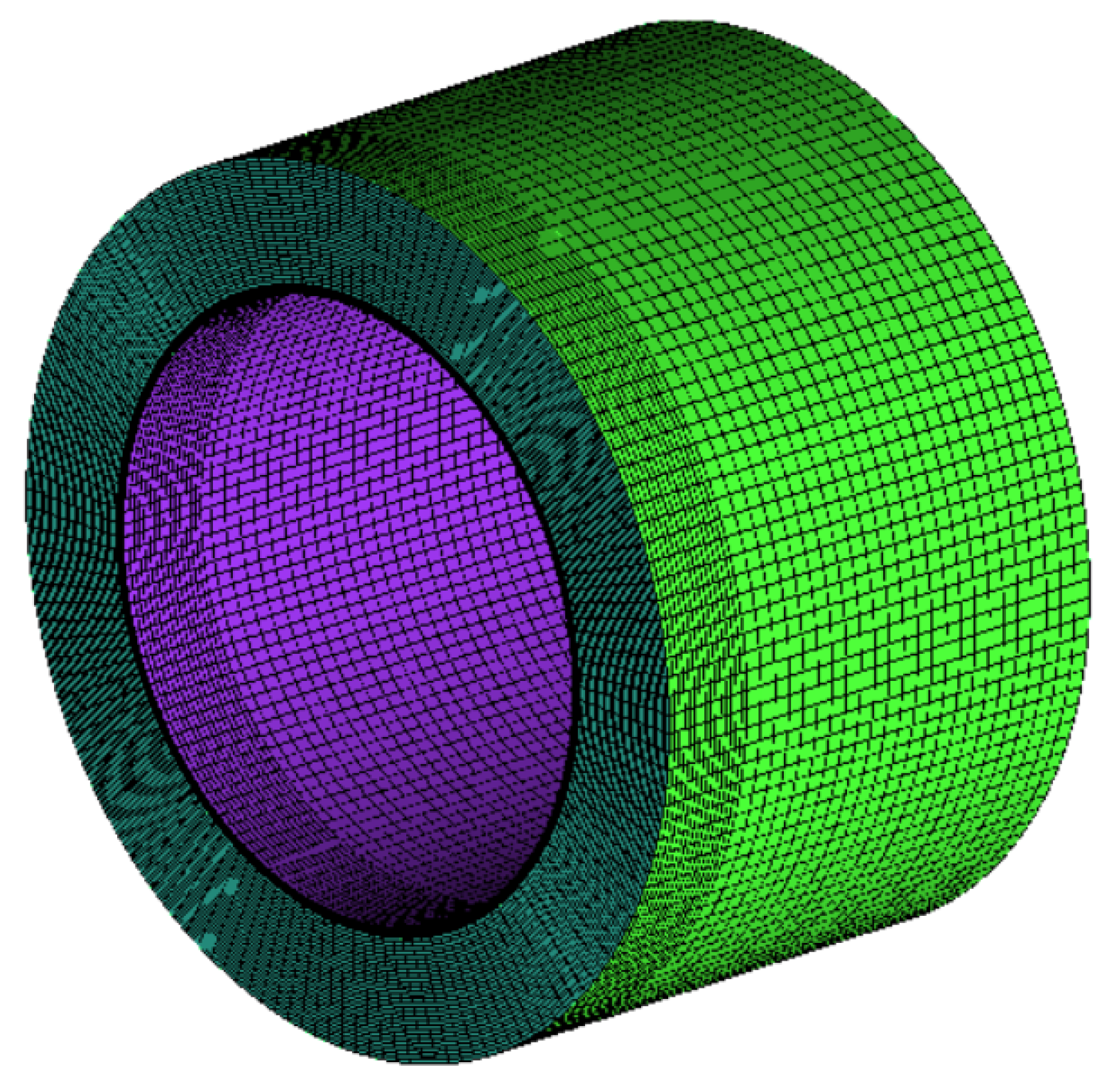
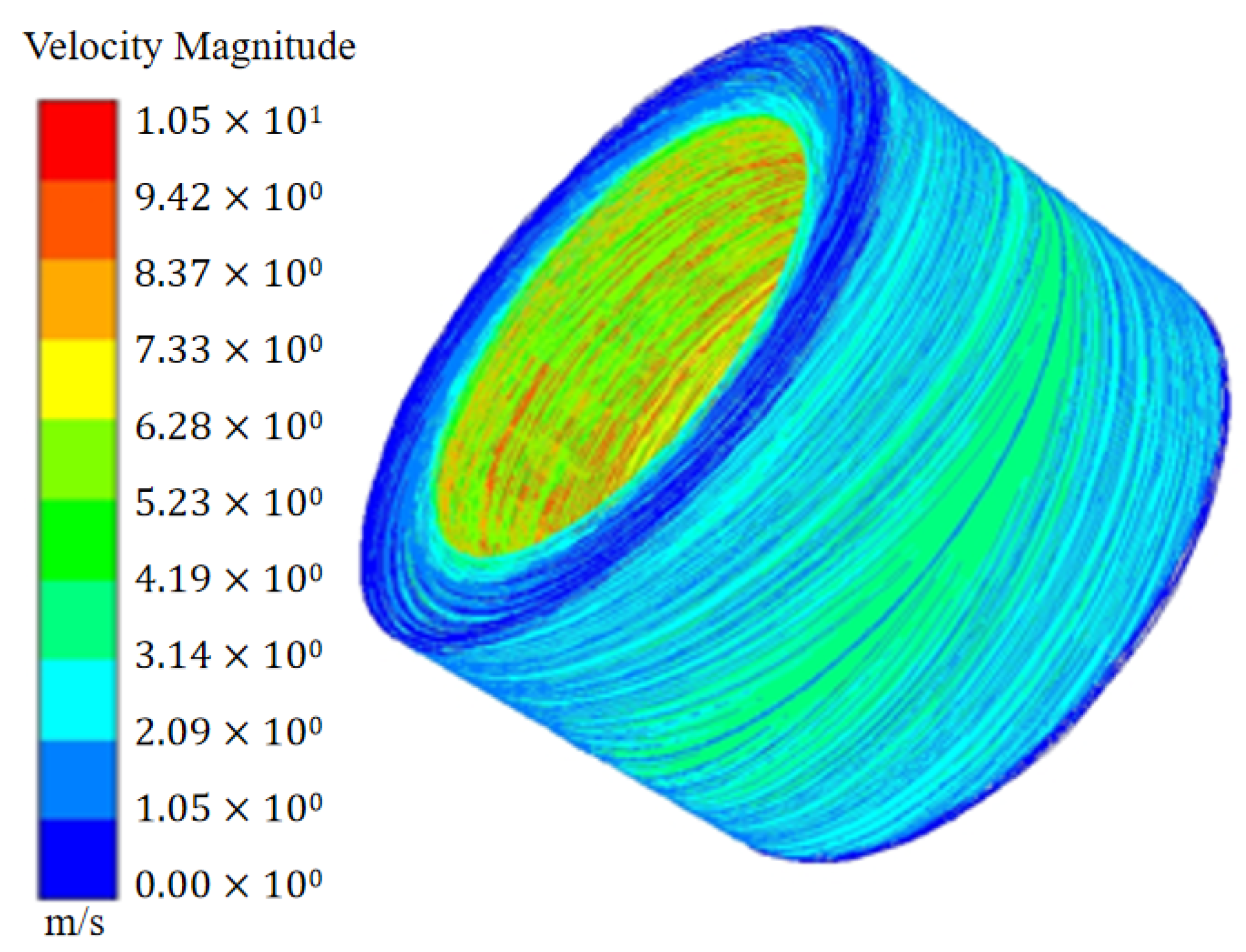



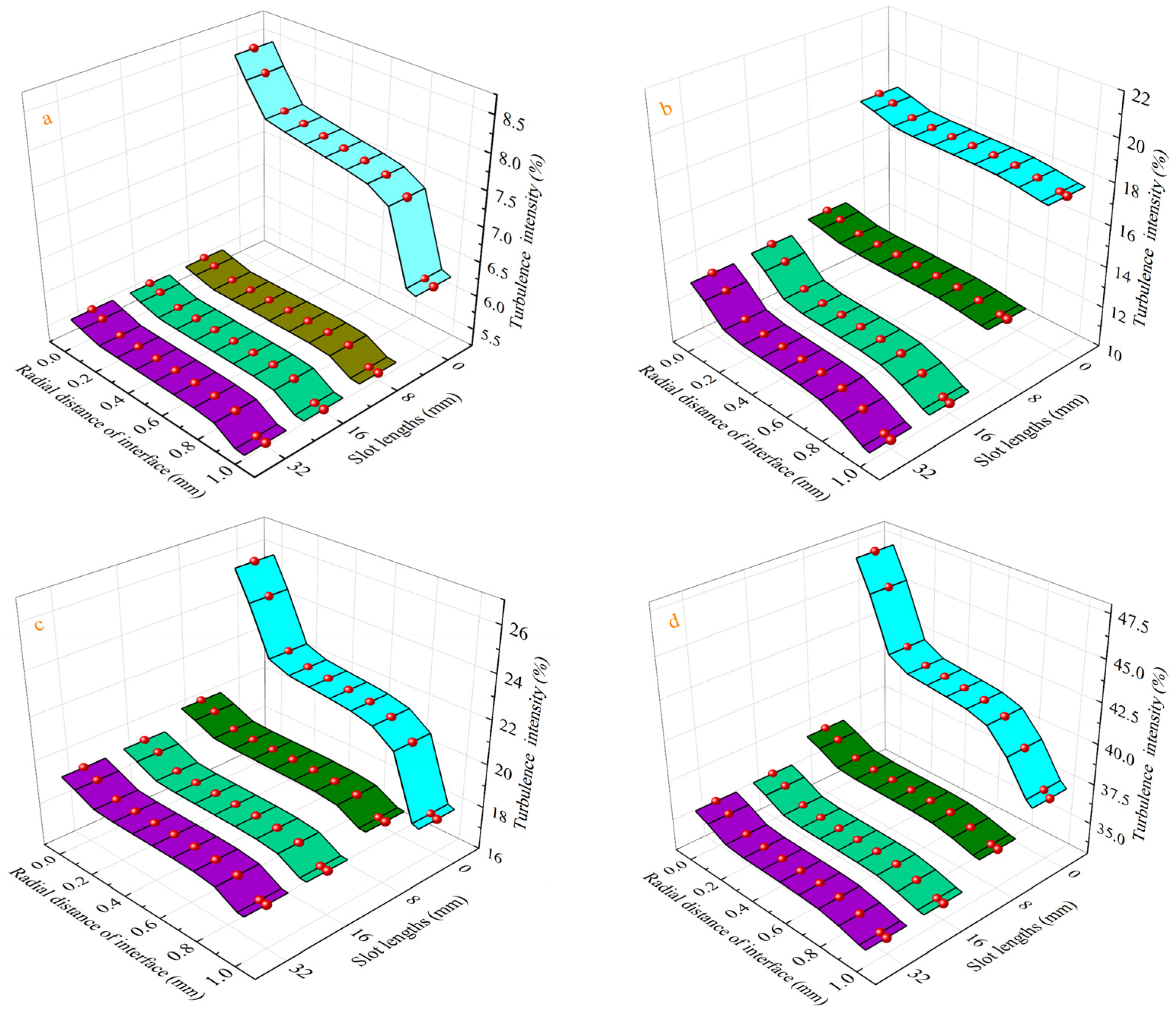
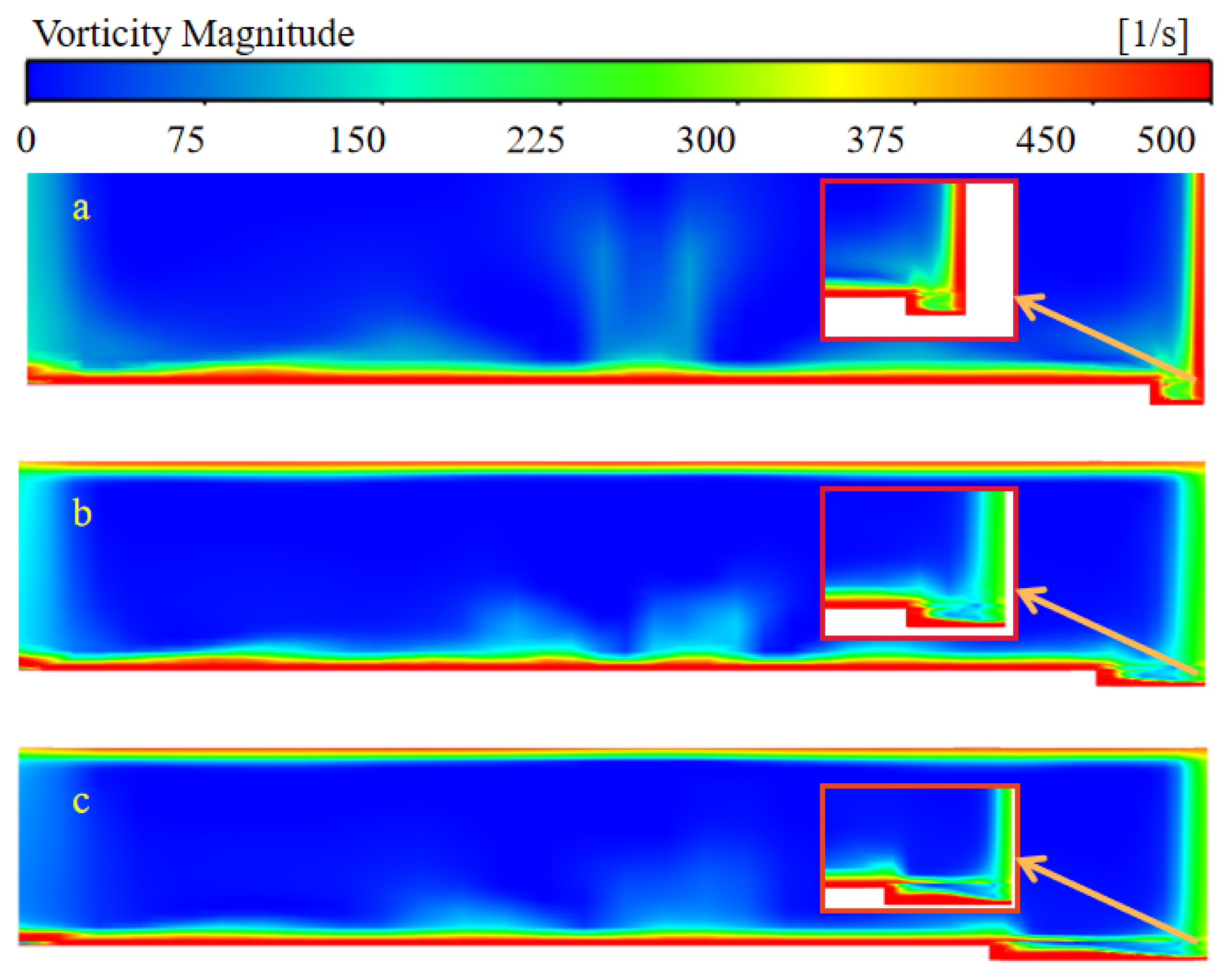
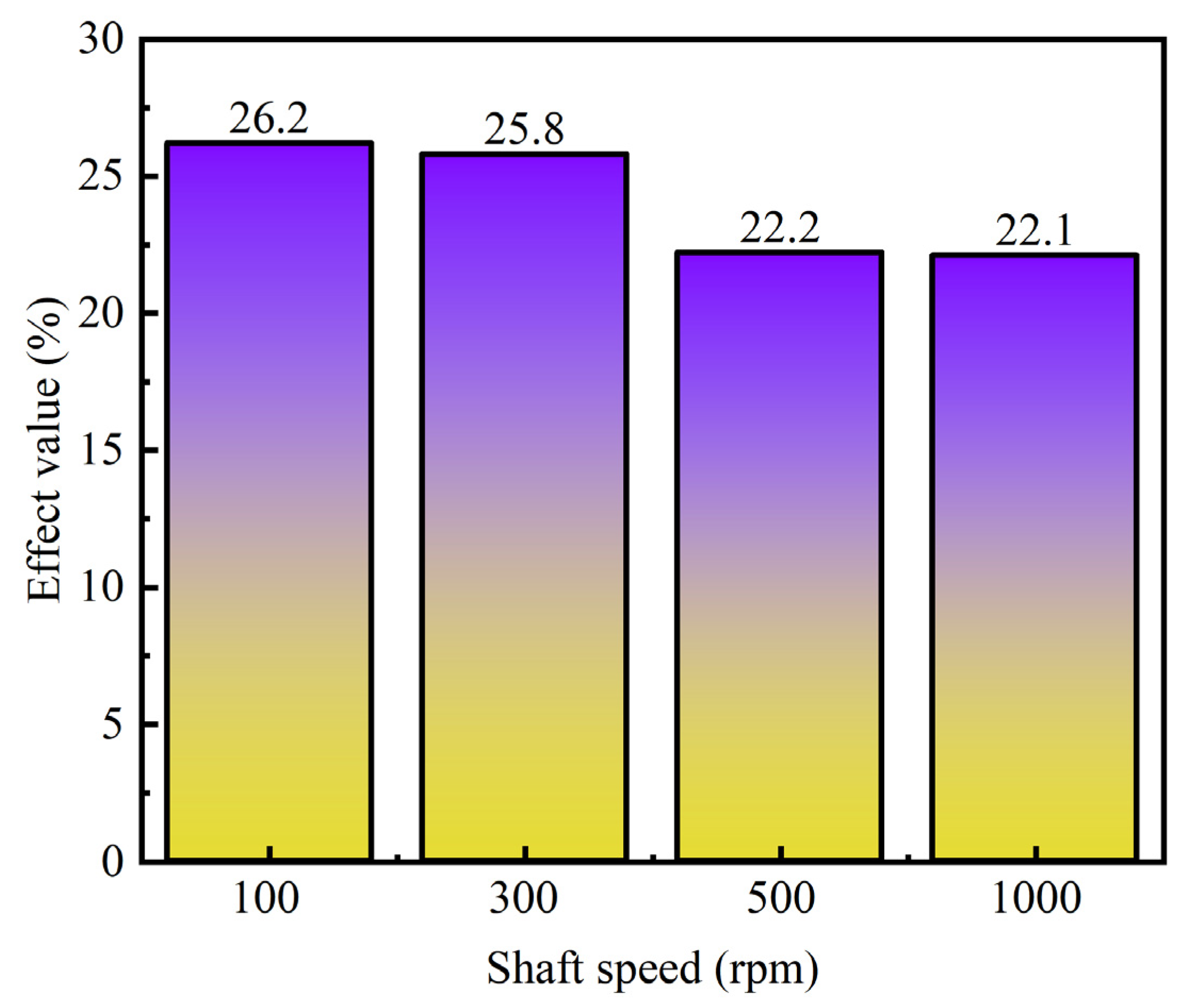
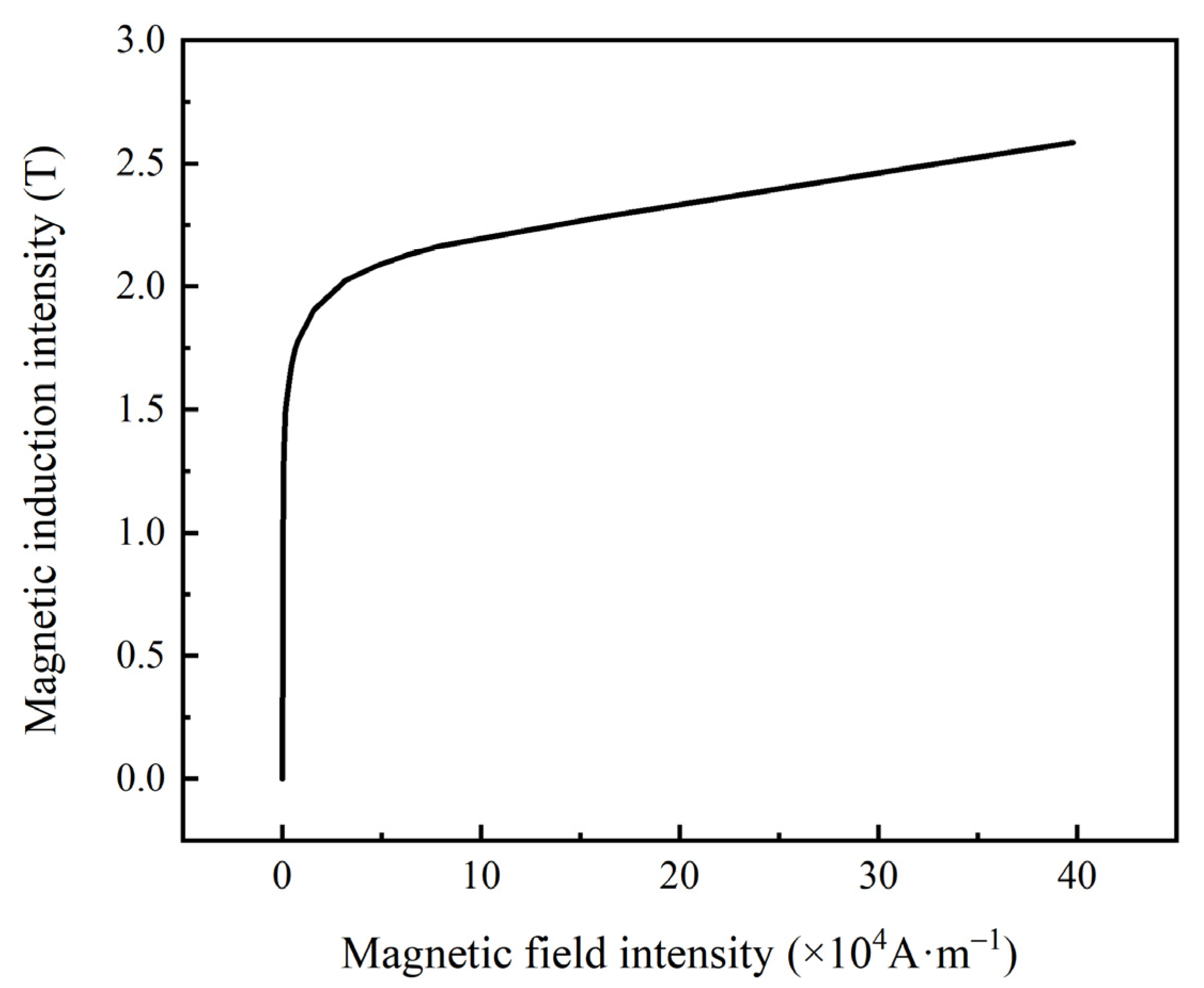
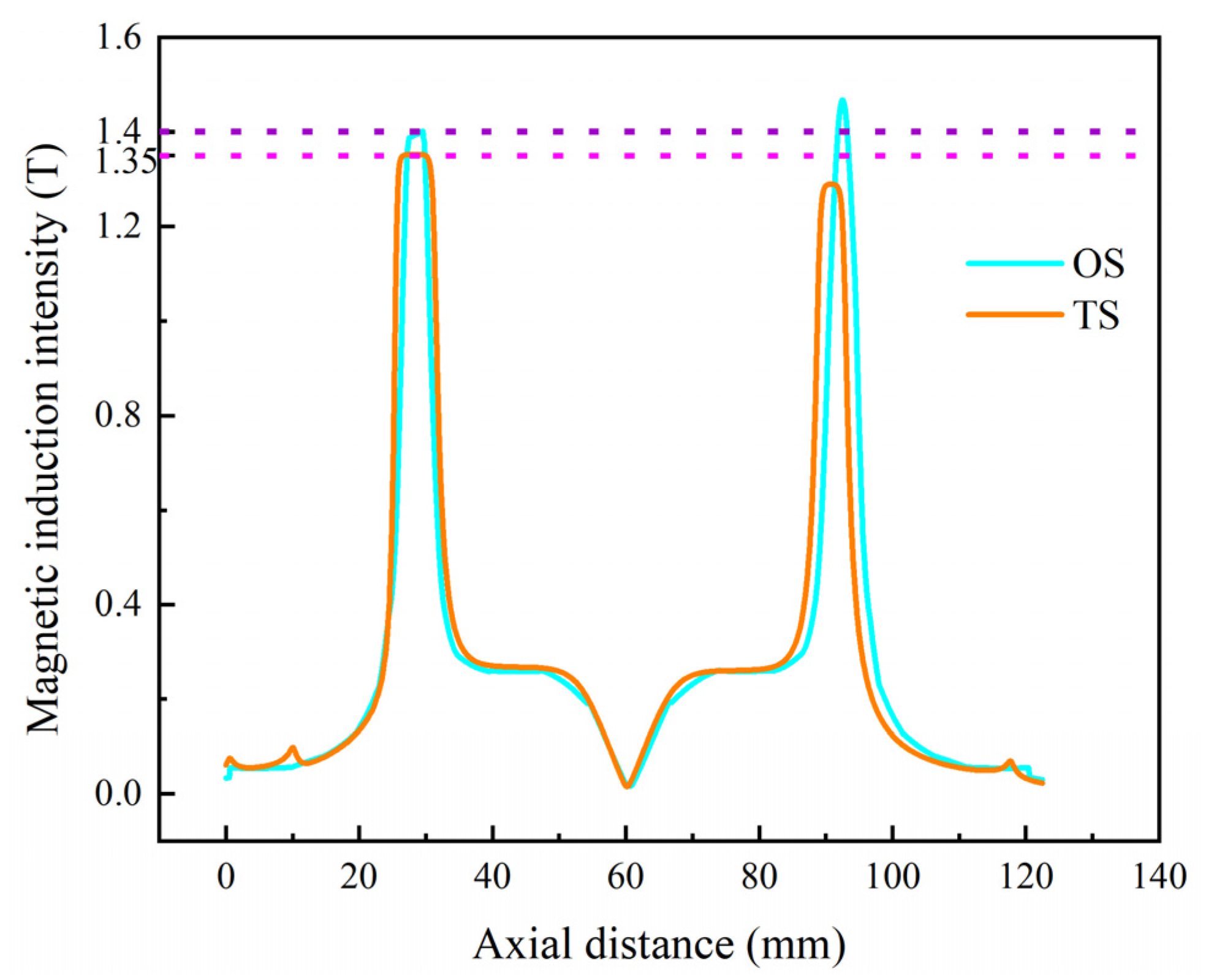
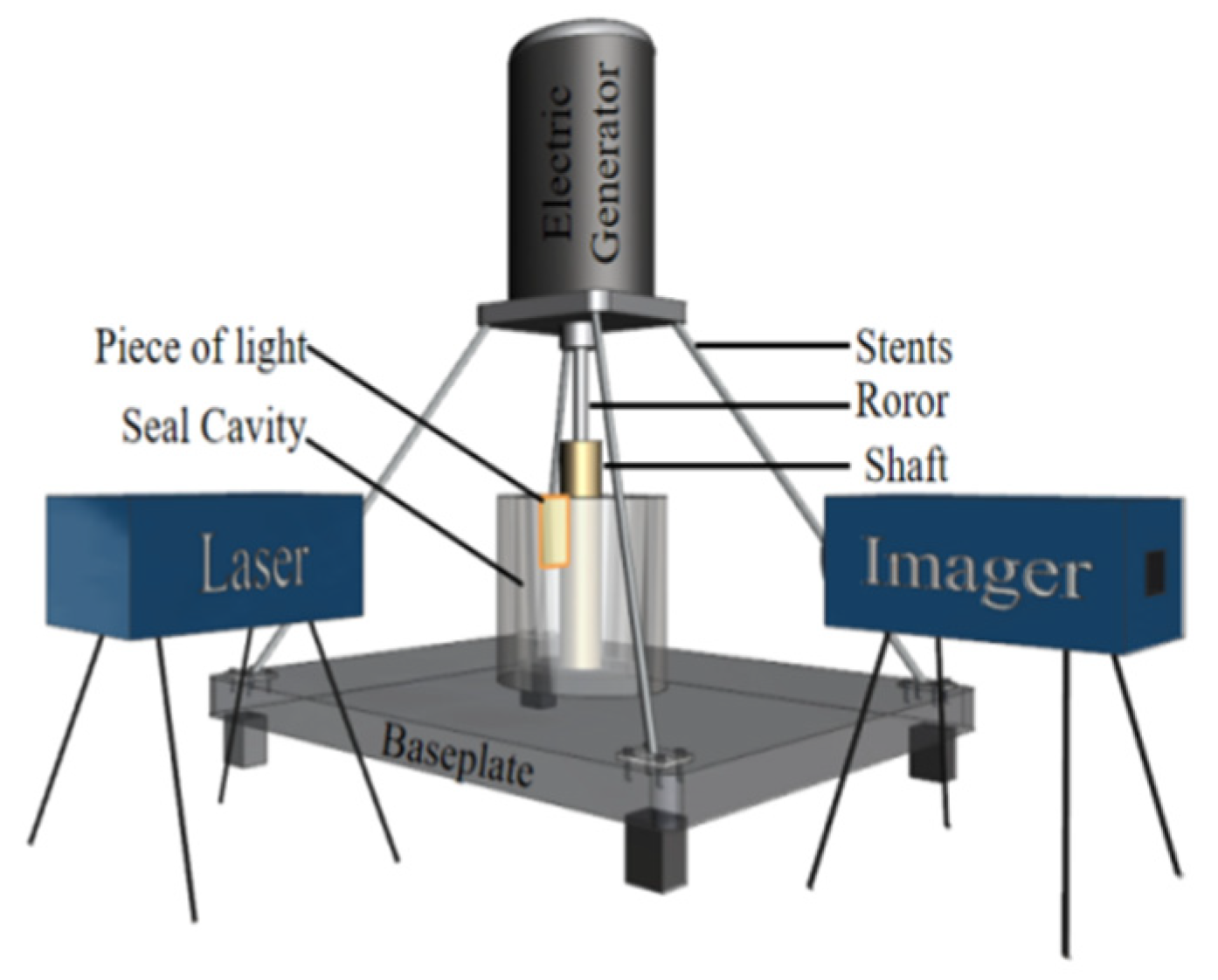
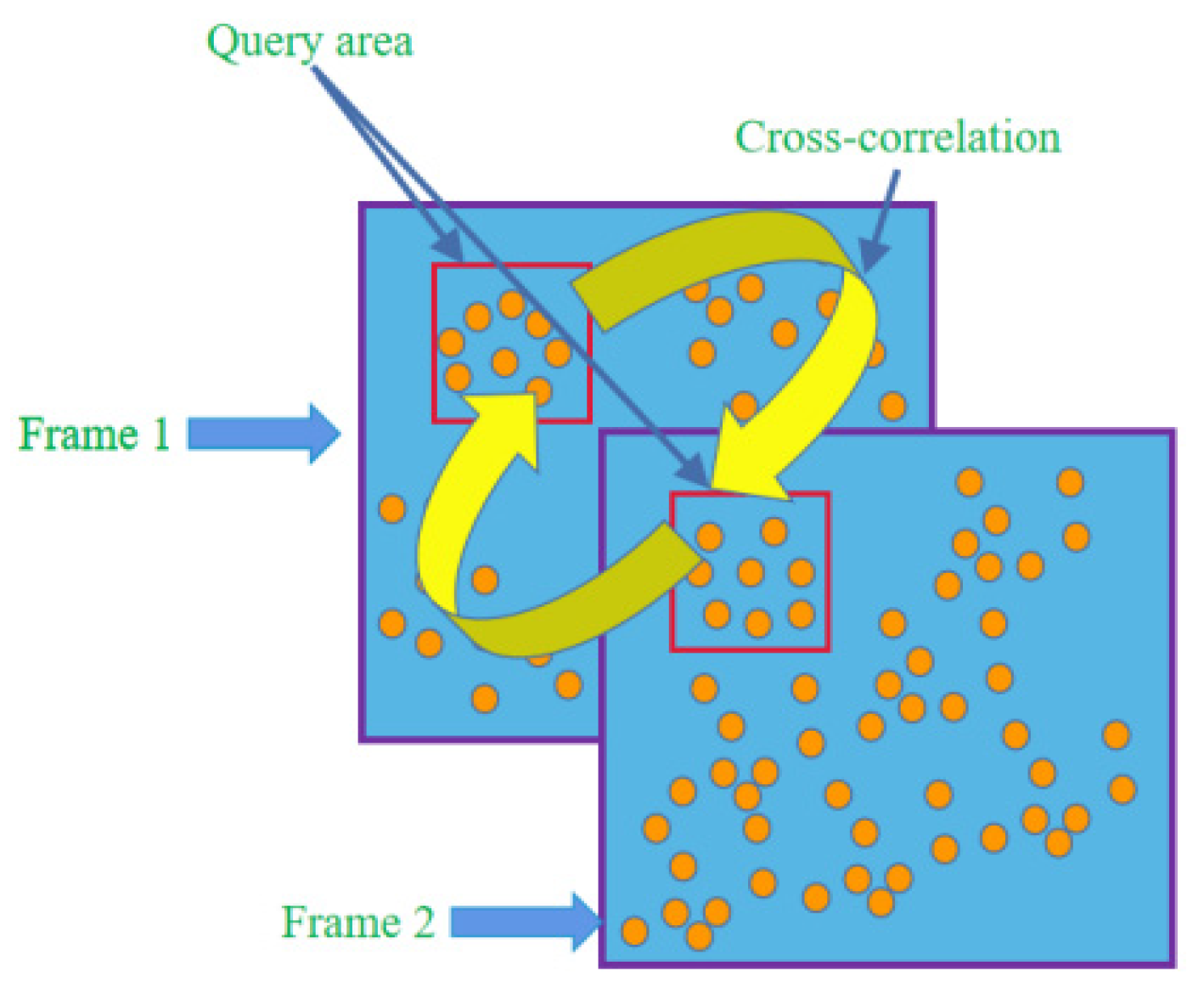

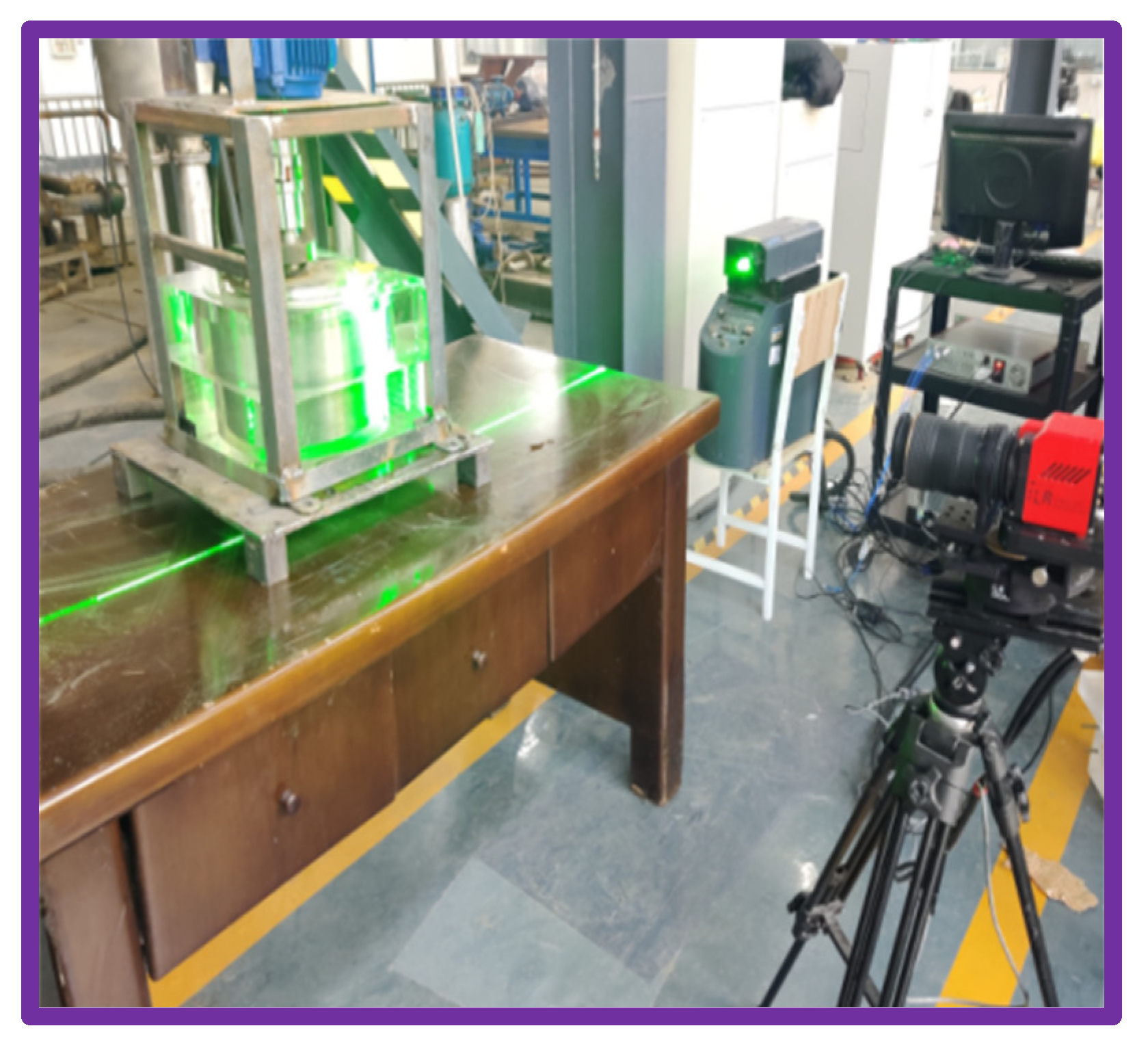

| Item | Value |
|---|---|
| Shaft diameter | 200 mm |
| Inner radius of the pole piece | 214 mm |
| Outer radius of the pole piece | 294 mm |
| Length of the pole piece | 28 mm |
| Height of the pole teeth | 6 mm |
| Width of the pole teeth | 4 mm |
| Inner radius of the permanent magnet | 214 mm |
| Outer radius of the permanent magnet | 294 mm |
| Length of the permanent magnet | 12 mm |
| Main Parameters | Technical Indices |
|---|---|
| Function | Measure the 2D velocity field distribution on a plane to obtain U and V velocity components, vorticity, velocity gradients, streamlines, etc. |
| Speed measurement range | 0–1000 m/s |
| Speed measurement accuracy | U and V component: ≤1% of reading |
| Measured area | Flow field area ≥900 mm × 1000 mm |
| Overall operating frequency | 15 Hz |
| Bits | 16 bits |
Publisher’s Note: MDPI stays neutral with regard to jurisdictional claims in published maps and institutional affiliations. |
© 2021 by the authors. Licensee MDPI, Basel, Switzerland. This article is an open access article distributed under the terms and conditions of the Creative Commons Attribution (CC BY) license (https://creativecommons.org/licenses/by/4.0/).
Share and Cite
Li, W.; Li, Z.; Wang, Z.; Wu, F.; Xu, L.; Peng, S. Turbulence Intensity Characteristics of a Magnetoliquid Seal Interface in a Liquid Environment. Coatings 2021, 11, 1333. https://doi.org/10.3390/coatings11111333
Li W, Li Z, Wang Z, Wu F, Xu L, Peng S. Turbulence Intensity Characteristics of a Magnetoliquid Seal Interface in a Liquid Environment. Coatings. 2021; 11(11):1333. https://doi.org/10.3390/coatings11111333
Chicago/Turabian StyleLi, Wangxu, Zhenggui Li, Ziyue Wang, Feng Wu, Lianchen Xu, and Shengyang Peng. 2021. "Turbulence Intensity Characteristics of a Magnetoliquid Seal Interface in a Liquid Environment" Coatings 11, no. 11: 1333. https://doi.org/10.3390/coatings11111333





